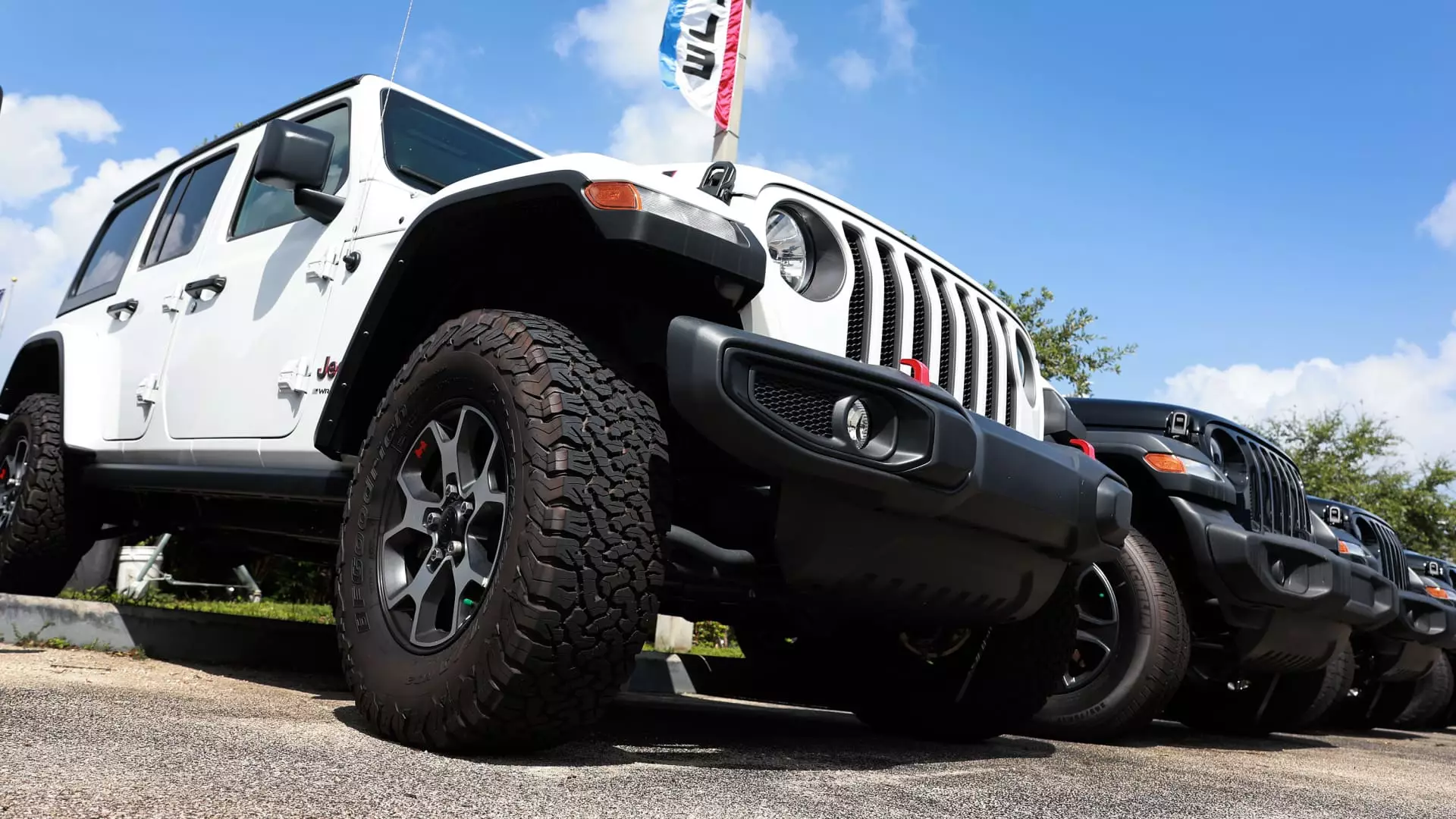As the automotive industry moves through the latter part of 2023, the numbers indicate a challenging journey for new vehicle sales in the United States. Economic uncertainties, fluctuating political landscapes, higher interest rates, and overall pricing pressures appear to have taken a toll on consumer purchasing behavior. With experts from Cox Automotive and Edmunds.com weighing in, predictions point toward a decline of about 2% in new vehicle sales during the third quarter compared to a year ago, cumulatively amounting to approximately 3.9 million vehicles sold. This estimate also reflects a worrying 5% drop when measured against the previous quarter.
The economic environment has fostered an atmosphere of caution among consumers. The recent decision by the Federal Reserve to cut interest rates may be seen as a positive move, yet industry analysts remain skeptical about its immediate impact on automotive sales. Charlie Chesbrough, a senior economist at Cox Automotive, noted that the year has been marked by significant volatility in the vehicle market, and it’s likely that we will continue to see these trends play out into the fourth quarter. The primary roadblock remains affordability; many prospective buyers find the prices for new vehicles prohibitively high.
According to Jessica Caldwell, head of insights at Edmunds, the average financing amount for new cars hovers around $40,000, a figure that underscores the financial strain on potential buyers. As affordability poses a substantial barrier, it constrains the number of households capable of entering the market for new vehicles, leading to a contraction in overall sales figures.
The sales performance of different automakers reveals a mixed bag. While some manufacturers, like Honda Motor and Ford, are forecasted to experience growth by capitalizing on their product offerings and market strategies, others, such as Stellantis, Toyota Motor, and BMW, are expected to face significant declines in sales. Stellantis, in particular, has been struggling, with sales expected to plummet by approximately 21% in the current quarter. CEO Carlos Tavares’s strategy of prioritizing pricing and profits, particularly for their Jeep and Ram brands, appears to have led to a deterioration of market share that will require significant reevaluation.
These contrasting reports underline the varying degrees of resilience among different automakers amid the same economic pressures. Manufacturers seemingly need to adapt quickly to shifting consumer preferences, especially as electric vehicles (EVs) become a staple of modern automotive discussions.
As electric vehicles continue to carve out a space in the automotive market, their sales are projected to increase by approximately 8% in the third quarter compared to last year. However, it’s crucial to note that leading EV manufacturer Tesla is facing its own set of challenges, with expected sales dipping by 2.4%. This marks the second consecutive quarter where Tesla’s share is predicted to fall below 50% — a significant milestone for a brand that has enjoyed unparalleled dominance in the EV sector.
The growth in EV sales can largely be attributed to various incentives aimed at reducing the cost barrier for consumers. Federal credits, which can reach as high as $7,500, enhance the desirability of these vehicles, especially given that the average transaction price for new EVs remains comparatively stable year over year. Yet, the relatively high percentage of incentives offered—around 13.3% of the average transaction price—indicates that traditional models face increasing competition not only from price but also from consumer appetite for more sustainable vehicle choices.
While the third quarter has brought with it challenges, forecasts for the future remain cautiously optimistic. Both Cox and Edmunds anticipate total U.S. light-duty vehicle sales to reach around 15.7 million in 2024, albeit with Cox adjusting its earlier projections slightly downward from 16 million. These estimates showcase a resilience in the market and potential for recovery, although the path forward will inevitably demand that manufacturers refine their strategies, reconsider pricing, and enhance the value offerings for consumers.
The landscape of U.S. vehicle sales reflects an intricate web of economic influences, evolving consumer behaviors, and competitive dynamics. The third quarter signals both struggles and opportunities, as manufacturers and buyers navigate a future that promises further change and adaptation amidst ongoing uncertainty.


Leave a Reply